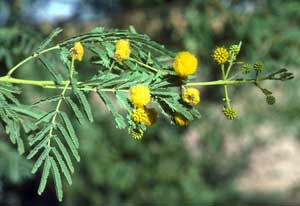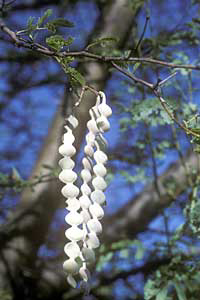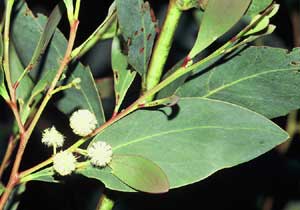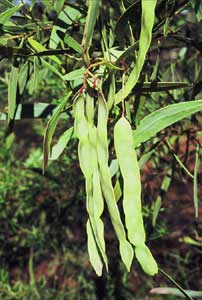The name Acacia retained for Australian species
The old concept of Acacia was a genus of about 1350 species, distributed from Africa around the Indian Ocean to tropical Asia and Australia and in the tropical Americas. Recent taxonomic research in Australia and abroad has increasingly pointed to the fact that this genus as we knew it could not be maintained as a single entity. It was likely that Acacia would be divided into at least five genera.
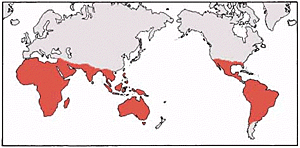
The vast majority of the old concept of Acacia species, nearly 1000, occur in Australia. Of these, about 955 belonged to the subgenus Phyllodineae, and make up our familiar wattles. Under the International Code of Botanical Nomenclature (ICBN), when a genus is split in the way proposed for Acacia, the generic name follows the internationally accepted standard, known as the Type species. Unfortunately, in the case of Acacia, the Type species nominated was A. scorpioides, universally accepted as a synonym of A. nilotica. Thus when Acacia was split, and if the genera were named in accordance with the original Type species, the name Acacia would have gone with A. nilotica to a group of 161 species distributed across Africa, Asia, the Americas and northern Australia (seven species). Almost all of the Australian species would have needed new names under the next oldest available generic name, Racosperma.
Following decisions made at the last two International Botanical Congresses, the ICBN now allows that in cases where strict application of the rules of nomenclature would introduce unnecessary disruption to nomenclature, cases can be referred to the relevant standing committees of the International Association for Plant Taxonomy (IAPT) for a legislated exception.
In May 2003 Dr Tony Orchard (Commonwealth Dept of the Environment and Heritage), with Mr Bruce Maslin of the WA Department of Conservation & Land Management, prepared a case to change the type species of Acacia in such a way that, were it to be split up, the generic name Acacia would follow the largest fragment, the old subgenus Phyllodineae. This botanico-legal request was published in the journal Taxon (Orchard & Maslin, 2003), and then the relevant committee (the Spermatophyta Committee of IAPT) considered the situation. Considerable lobbying ensued, and Orchard and Maslin were involved in preparing a number of responses and supplementary papers.
In mid-2004 it was announced that the committee has made a decision to conserve Acacia with a new type species, Acacia penninervis. The Committee’s decision then needed to be endorsed by the General Committee of IAPT and ratified at the International Botanical Congress in Vienna in 2005.
This final ratification occured on 30 July 2005.
It means that, should the genus be split, the name Acacia will still apply to the 948 species of Australian phyllodinous wattles, seven related species in the Pacific Islands, one or two in the Madagascar region and 10 in tropical Asia. Only about seven Australian species would change their generic name to Vachellia, and two would become Senegalia.
The official report of the Spermatophyta Committee, with detailed discussion of the reasons for their decision, is published in Taxon, Volume 53, Number 3, 1 August 2004, pp. 826-829(4)
Background information and some of the documents supporting the case can be found on http://www.worldwidewattle.com/infogallery/taxonomy/
An article challenging the process that occured in conserving the name Acacia for an Australian species was published by G. Moore in the journal Bothalia in 2007, reference below.
References:
Orchard, A.E. & Maslin, B.R. (2003). (1584) Proposal to conserve the name Acacia (Leguminosae: Mimosoideae) with a conserved type. Taxon 52: 362–363.
Brummett R. (2004) Taxon, Volume 53, Number 3, 1 August 2004, pp. 826-829(4)
Moore, G. (2007) The handling of the proposal to conserve the name Acacia at the 17th International Botanical Congress—an attempt at minority rule. Bothalia 37, 1, pp. 109-118
![An Australian Government Initiative [logo]](/images/austgovt_canbr_90px.gif)





